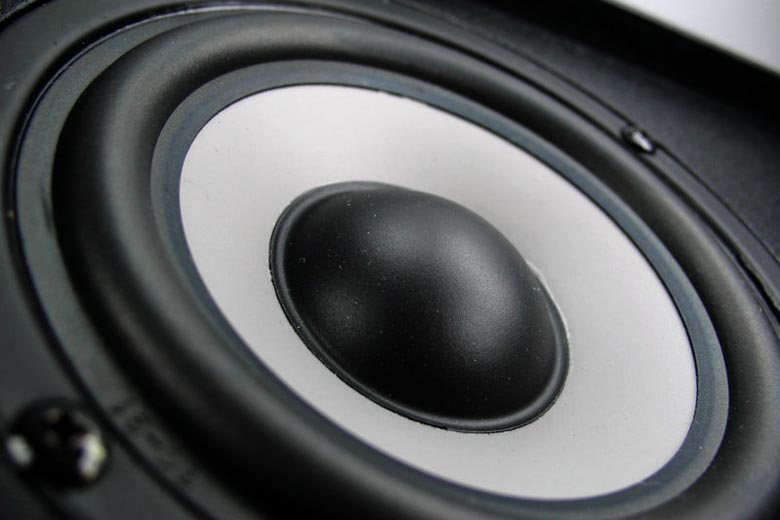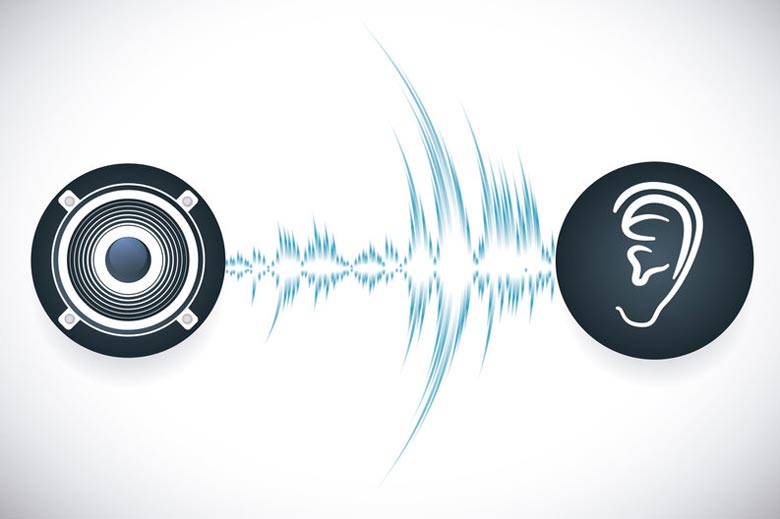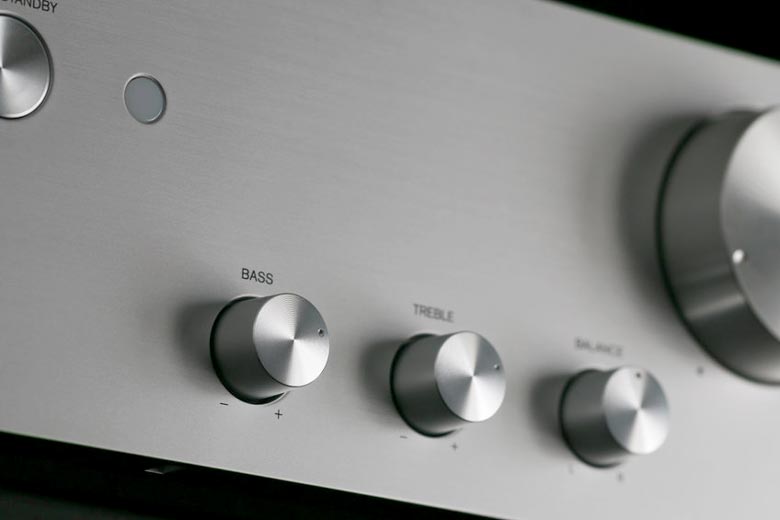Imagine watching a movie only to find that it sounds like it was being played in a tunnel. Perhaps you’re listening to a recording that was made at low volume or the sound was coming from the floor beneath you. These are just some of the many adverse effects that subwoofer distortion can have on your overall experience.
Here are some tips on how to fix subwoofer distortion at low volumes:
- Inspect your subwoofer for any signs of damage.
- Engage the low pass filter to cut off unwanted frequencies.
- Use equalization.
- Ensure you have a clean, flat signal.
- Switch to a powered subwoofer.
- Adjust the gain.
- Check for loose connections.
- Get a new subwoofer and amplifier.
Usually, subwoofers distort at high volumes, but you may have noticed that they can also distort at low volumes. The subwoofer cone is stiffer than other speakers, and when the amplifier is trying to move a rigid speaker, there’s not much room for error.
This article explores common causes of subwoofer distortion at low volumes and how to fix it without necessarily going to the repair shop.

1. Inspect Your Subwoofer for Any Signs of Damage
First, check the speaker cables that connect your subwoofer to your amplifier or receiver. Check for minor tears or large cracks in the shielding.
If you see any cracks in the cone, or if it looks deformed in any way, you’ve probably found your culprit. Damaged speaker cones can be fixed, but badly damaged wires need immediate replacement.
2. Engage the Low Pass Filter To Cut Off Unwanted Frequencies
When playing your music on low volume, there are chances that unwanted high and low frequencies are contaminating the output.
To reduce the effect, it would help if you engaged the low pass filter to cut off unwanted frequencies. The low pass filter (LPF) prevents any unnecessary treble from being added to your system.
Low pass filters work by simply filtering out high frequencies above the cut-off frequency and allowing frequencies below the cut-off to pass.
This way, only the desired frequencies at low volume penetrate.
3. Use Equalization
Equalization (EQ) is an essential component that helps fix a sound problem spread out over individual frequency bands. First of all, bass at low volumes doesn’t come out as clearly as you would want it to.
You can use an equalizer to boost the bass output and, at the same time, minimize the treble. This should be done to personal preference or until you hear no more distortion. It would also help if you avoided bass boosted signals.
Some amplifiers have a “bass boost” control that essentially makes the low frequencies louder and more prominent. If you have a bass boost, make sure that you are using it at the correct time.
We recommend using a subwoofer with a high pass filter, or one with a low pass filter in place of the bass boost circuit, as they’ll ensure that your bass frequencies aren’t boosted too high.

4. Ensure You Have a Clean, Flat Signal
If your subwoofer is connected to the receiver’s preamp outputs, make sure that the signal coming from your receiver is clean and flat. The signal should be as clean as possible for a subwoofer.
If your subwoofer is connected directly to the amplifier, make sure that there are no other devices or cables between it and your amplifier that might be causing noise or interference.
Remove all other cables and devices between the amplifier and subwoofer to prevent interference.
If you’re using a direct-connect cable, make sure that it’s not too long. A long cable can cause ground loop problems and interference between the subwoofer and other connected speakers (especially if they’re in different rooms).
Use a cable with a maximum length of 10 feet (3 meters) if applicable.
Related article: Are Subwoofer Cables Directional?
5. Switch to a Powered Subwoofer
A powered subwoofer features a built-in amplifier. Most subwoofers are powered, but if you’re relying on an older model and an external amp, you might want to turn to a powered subwoofer.
A powered subwoofer allows you to set the level of your system at whatever level your sub is most comfortable listening at without having to keep adjusting the levels on your amp or receiver’s built-in EQ settings each time there’s a change in music source.
6. Adjust the Gain
Your subwoofer’s gain settings can have a massive impact on the sound output quality. Most people will often crank up the gain knob with the hope of getting the highest-quality, loud sounds.
Unfortunately, this brings up a distortion issue which manifests even at low volumes.
The best way to address this is to turn down the gain knob and bump up the volume until you hear distortion.
Start at 25% gain, and stop at the first instance of distortion of clipping. On a scale of 10, we recommend a +10 bass and -5 treble.
7. Check for Loose Connections
Loose connections can also introduce distorted sounds to your subwoofer. Unfortunately, loose wires and contacts often go unnoticed.
If you’ve had a subwoofer installed in the past few weeks, check to see if it’s been jostled or moved around while it was being installed.
You may want to put some foam tape around it to secure it in place during installation. If you’re installing a new subwoofer, double-check that all of the wires are connected properly before turning on your amp.
8. Get a New Subwoofer and Amplifier
If you have subwoofer distortion at a low volume, the chances are that your subwoofer is not working properly. You’ve probably tried all the tricks in the book.
If nothing seems to work, you might want to consider getting a new subwoofer and amplifier.
Of course, this won’t come cheap.
What Does Subwoofer Distortion Sound Like?
A distorted sound is easily noticed. However, at a low volume, it will be difficult to hear unless you have a keen ear. This is because it’s anything other than the desired original.
To know if your subwoofer is distorted, play a song you’re familiar with and listen to how it sounds.
If it doesn’t sound as expected, your subwoofer is likely distorted. A distorted sound is also accompanied by hissing, static, and fuzzing.
Related article: How to Remove a Humming or Hissing Sound from Speakers
Causes of Subwoofer Distortion at Low Volume
When listening to music, the last thing you want is to be distracted by annoying sounds coming from the speakers. If you have a small space for your audio setup and are only able to play at low volumes, you might be experiencing distortion at these low frequencies.
Here are some of the leading causes of subwoofer distortion at low volume:
Small, Strained Speaker Core
When you play audio at a higher volume than the subwoofer is capable of, you are going to have to deal with distortion. This could happen if you set the bass too high for the speaker to handle.
Speakers that are too small for the space will not be able to produce enough bass to cover the entire room and can easily distort when pushed too hard.
The ideal subwoofer speaker size for your room will depend on the size of the room and your listening volume. Bear this in mind when purchasing a speaker.
Related article: Does the Orientation of a Subwoofer Matter?
Equalization
Another critical factor in the quality of bass that you hear at low volumes is how the subwoofer’s frequency response is set using the equalizer settings on your receiver or amplifier.
If your subwoofer’s EQ settings are out of whack, then it may produce a sound that distorts, even if it has a good frequency response and high enough power output.

Melted Voice Coil
A voice coil is the part of a speaker that converts electrical energy into mechanical energy. It is usually made from copper wire wrapped around a magnet.
The voice coil is attached to the speaker cone and moves back and forth when an electrical current is applied to it.
After years of abuse, your subwoofer’s voice coil could easily fall victim to melting, which brings a new set of issues.
No matter how low or high you play a subwoofer with a melted core, it won’t sound clear at all.
Instead, the sounds come out muffled and distorted even at a low volume.
Amplifier Gain Setting
If you are using a high-powered amp (like 350 watts or more), you may need to turn down the gain setting on your amp so that it does not overdrive and distort when playing low frequencies at low volume levels.
This will be a personal preference depending on how much distortion you can tolerate getting more volume from your system.
The power output of your amplifier also plays an important role in how cleanly your subwoofers can output low frequencies without distorting.
If your amplifier isn’t powerful enough to run your subwoofers without distorting, you will need to get a more powerful amp.
Related article: Should an Amp Be Bigger Than a Sub? What You Must Know
Bad Quality Audio Components and Audio Source
Cheap wires, subwoofers, amplifiers, and other audio components will always face many challenges, including distortion at low volumes.
For instance, bad-quality wires lack sufficient shielding, introducing electrical noise into the system.
And that’s not all. Bad quality wires also can’t keep tight connections between your devices, leading to noise interference and distorted sounds.
You may need to upgrade the speaker or subwoofer drivers or replace them entirely with higher-quality units. The same goes for amplifiers and receivers. This can be expensive, but it may be necessary to achieve a high-quality listening experience.
Don’t forget to check the audio source too. If you’re playing music files from unknown sources, try an original source and see how that works out. So, always check your source and be sure to get decent wires and equipment from decent stores near you.
How To Prevent Your Subwoofer From Distorting at Low Volume
Not every subwoofer is created equal, and some can handle low-volume audio better than others. When you’re listening to music on your home stereo system, the volume is usually set to a comfortable level that allows you to hear the song and not be bothered by loud music.
Here are a few precautionary measures to keep distortion at bay include:
- Don’t overdrive your subwoofer. Overdriving your subwoofer means that the amplifier is putting out more power to the sub than it can handle, which causes distortion. One simple way to avoid an overdrive is to keep the volume and gain at an optimum.
- Keep your subwoofer cool. One of the first things you can do to fix subwoofer distortion at low volumes is to make sure your subwoofer is properly ventilated. This will help prevent heat from building up inside it and keep it from overheating. You may want to invest in a small fan that you can place next to the subwoofer for additional ventilation.
- Use a subwoofer equalizer to adjust the bass. The bass in a movie or song can sound different depending on where you’re sitting, and it also depends on how close you are to the speakers. For this reason, it can help to adjust the bass by boosting or cutting frequencies as needed with a graphic EQ.
- Keep your subwoofer dry and dust-free. The accumulation of dust and moisture on a subwoofer can happen over time. To keep this from happening, regularly clean your subwoofer with a microfiber cloth. Use an anti-static spray (or any other type of cleaner) to remove dust and lint from any vents on the speaker (as well as the vents on the amplifier).
It may sound like a lot of work, but it ensures that your subwoofer lasts longer.
Final Thoughts
The best way to avoid subwoofer distortion at low volumes is to take care of your subwoofer. Most subwoofer issues originate from inadequate care, although adjusting your controllers can help solve the problem.
If none of these solutions work for you, you may have to consider moving your subwoofer somewhere else in the room or even replacing it with another one.